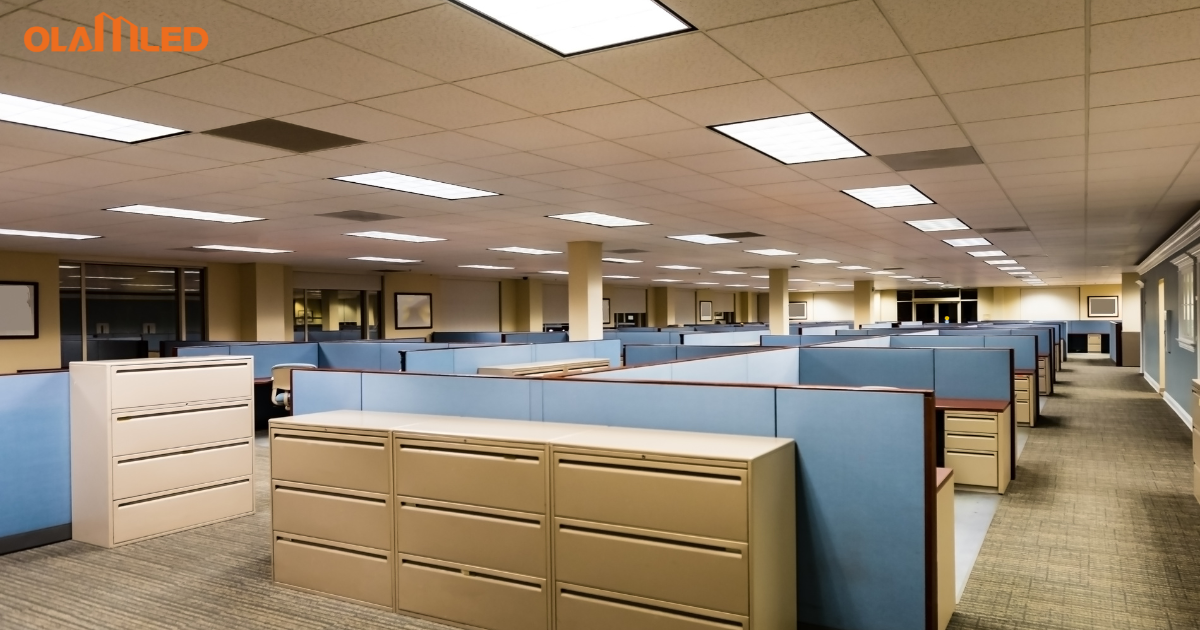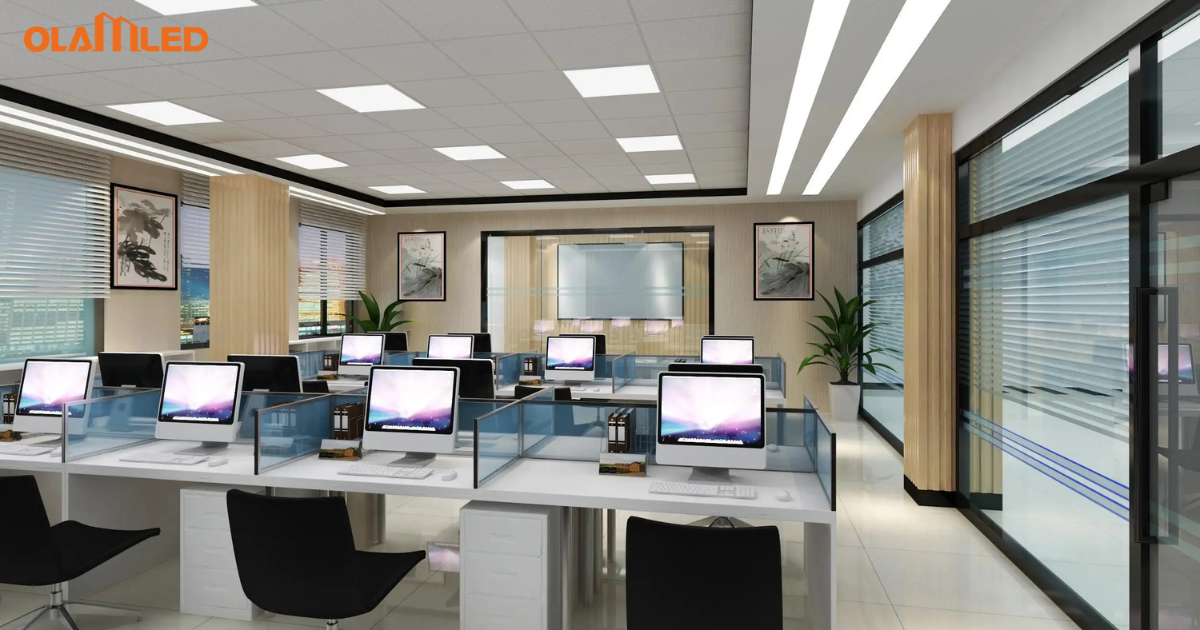Selecting LED panels for hospitals isn’t about chasing the highest lumen number. It’s about visual comfort and clinical utility: low glare for patients and staff, CRI 90+ for accurate color rendering, and circadian-friendly tunable CCT so day-night cues aren’t disrupted. Think of glare like a bright reflection off a polished floor—manageable in an office, but distracting and fatiguing in clinical spaces. That’s why most designs target UGR ≤19 in general care areas and often tighter levels around exam and procedure zones.
How we screened suppliers (as of 2025)
We applied must-have criteria tailored to hospital environments:
- Clinical comfort: low-glare optics (target UGR <19), CRI 90+ options.
- Circadian support: selectable or tunable white (DT8/DALI-2 or equivalent) within clinically relevant ranges.
- Compliance and hygiene: UL/ETL safety listing; DLC listing where applicable; IP sealing (≥IP54 where infection control requires); cleanroom suitability where stated.
- Documentation: current spec sheets, IES files, warranty terms, and emergency lighting pathway compatibility.
Evidence stance: we prioritize official datasheets and manufacturer pages; where a spec (e.g., numeric UGR or COI) isn’t published, we call that out and recommend vendor confirmation.
Quick comparison (shortlist snapshot)
| Supplier / family | Glare / UGR stance | CRI options | Tunable CCT | IP / cleanroom | Emergency pathway | Controls |
|---|---|---|---|---|---|---|
| Signify/Philips CR350B | Stated low glare, UGR <19 | >90 | Family-level tunable options | IP65; cleanroom-ready | Compatible with UL 924 devices (verify pairing) | DALI variants |
| Zumtobel CLEAN II Supreme | MPO+ low-glare optic | Ra >90 | TunableWhite 2700–6500K | Room-side IP50; cleanroom use cases | Emergency options available | DALI |
| Acuity (Nightingale) HSTL | Surgical/cleanroom distribution | 80/90/95 | Multi-CCT/aux colors | IP65/66; ISO 5–8 | Battery/inverter options | nLight; 0–10V; DALI |
| Kenall MedMaster (MRI4/BHDL4/MCRT) | Diffused, low-glare | High-CRI variants | Select models tunable | IP65 room-side; NSF2 | Emergency battery options | 0–10V/DALI |
| Trilux Fidesca panels | Cleanroom, low glare | 90+ (verify per datasheet) | Tunable on select variants | IP65 variants | Emergency kits per catalog | DALI |
| Viscor/Certolux CREH | UGR ~10–18 | 80/90+ | Fixed CCT (tunable not stated) | IP66 washdown; ISO 5–8; NSF2 | Battery options | 0–10V |
| OLAMLED Cleanroom Troffer + PG-2 | UGR <16 on PG-2; low-glare cleanroom optics | CRI >90 | Selectable/tunable options | IP54/IP65 options | Emergency function options | DALI-2/0–10V |
Supplier alternatives: strengths, caveats, and best-fit use cases
Signify/Philips — Cleanroom CR350B family
- Why it stands out: Documented UGR <19, CRI >90, IP65 sealing, and cleanroom suitability, with global support networks. Explore the official CR350B family page for specifications.
- Best for: ISO 14644 cleanrooms where washdown and uniform illumination are required.
- When not to choose: If a contract demands cyanosis observation compliance (COI) and it isn’t documented for your exact variant; if tunable CCT availability is limited in your region.
Zumtobel — CLEAN II Supreme (recessed)
- Why it stands out: MPO+ optic for glare control, Ra >90, and TunableWhite 2700–6500K for circadian profiles. Reference the official CLEAN II Supreme datasheet.
- Best for: Labs and clinical areas seeking strong color quality and tunable white without strict washdown.
- When not to choose: Spaces that mandate IP65 washdown from the room side.
Acuity Brands (Nightingale) — HSTL Surgical & Cleanroom
- Why it stands out: IP65/66 options, CRI up to 95, and robust control ecosystems (nLight, DALI). Review the official HSTL specification sheet.
- Best for: Surgical suites and ISO 5–8 cleanrooms prioritizing sealing and color fidelity.
- When not to choose: Projects with contractual UGR numeric limits if you cannot obtain a documented value for the selected configuration.
Kenall — MedMaster (MRI4SEDI/MRI4SESI, BHDL4, MCRT)
- Why it stands out: Healthcare specialization with IP65 room-side sealing, NSF2 splash compliance, UL wet location ratings, and antimicrobial finishes. Contact Kenall or consult current model datasheets for the exact configuration you intend to specify.
- Best for: Imaging suites, ICUs, and contamination-control areas requiring stringent sealing.
- When not to choose: High-end architectural aesthetics with advanced tunable profiles across all models.
Trilux — Fidesca cleanroom panels
- Why it stands out: IP65 cleanroom variants with European healthcare pedigree; tunable white available on select models. See the Fidesca G4 LED product page for model options.
- Best for: EU-based cleanrooms that need IP65 flat panels from an established OEM.
- When not to choose: Projects requiring explicit numeric UGR in contracts unless confirmed in the chosen datasheet.
Viscor/Certolux — CREH cleanroom troffer
- Why it stands out: Low-glare optics with documented UGR around 10–18, IP66 washdown from below, ISO 5–8, and NSF2 splash compliance. See the CREH product page.
- Best for: Contamination-control zones needing washdown capability and explicitly low-glare optics.
- When not to choose: If tunable white is mandatory and an off-the-shelf option isn’t provided.
OLAMLED — Cleanroom Troffer (CM series) + PG-2 Modular Panel
- Disclosure: OLAMLED is our product.
- Why it stands out: The PG-2 series offers ultra-low glare (UGR <16) with CRI >90 for comfort-centric clinical areas, and the CM cleanroom troffer line provides IP54/IP65 sealing for hygiene-critical spaces. Explore the LED panel light overview for portfolio context and links to specific series.
- Best for: Hospitals combining low-glare clinical zones (PG-2) with sealed cleanrooms (CM), especially where customization and controls flexibility are valued.
Procurement notes you shouldn’t skip
- Cyanosis observation and color rendering: Some regions reference AS/NZS 1680.2.5 COI ≤3.3 for accurate skin-tone assessment. If your clinical program requires COI, request light-source documentation and confirm CRI 90+ with adequate red rendering. A practical overview of COI considerations is covered in the Focal Point healthcare COI article (2018).
- Flicker and stroboscopic comfort: Hospitals benefit from drivers designed in line with IEEE 1789 and measured PstLM metrics. If flicker sensitivity is a concern, ask for IEEE 1789 notes and any IEC PstLM data from the manufacturer.
- Emergency lighting pathways: Many panels rely on external UL 924-certified inverters or battery packs. Ensure runtime aligns with code (commonly ≥90 minutes) and verify compatibility for your chosen luminaire family.
- Documentation bundle: To streamline approvals, ask each supplier for dated spec sheets, IES photometry, warranty terms, UL/ETL listings, DLC entries, IP/cleanroom declarations, and any tunable white/DT8 controls statements.
Request quotes and compliance spec sheets
Send your project constraints and we’ll compile a side-by-side supplier shortlist. Include:
- Room types and target glare levels (e.g., UGR ≤19; ≤16 for precision tasks).
- Required CRI and any cyanosis observation needs.
- Desired CCT ranges or tunable profiles; controls ecosystem (DALI-2/DT8, 0–10V, nLight).
- IP and cleanroom requirements; washdown expectations.
- Emergency pathway (UL 924 device type, runtime) and documentation list.
We’ll return quotes and compliance spec sheets from multiple vetted suppliers so your team can compare clinical comfort, certifications, and lifecycle fit without the guesswork.



